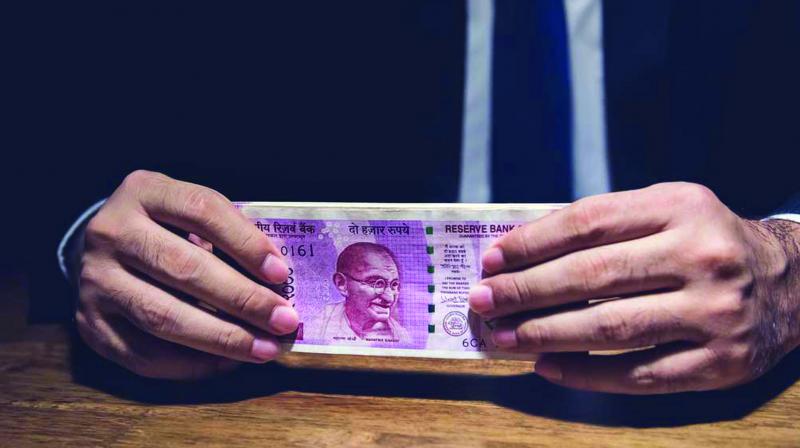Banks need Rs 20 lakh crore fresh deposits to meet credit demand

With bank credit likely to pick up a faster pace in the coming months, banks would be forced to change their deposit mobilisation over the medium term.
Bank credit in India would grow at a pacy 13-14 per cent on average between fiscals 2019 and 2020, significantly faster compared with the 8 per cent witnessed in fiscal 2018. To meet this credit growth, banks will have to raise about '25 lakh crore over the two fiscals. While '5-6 lakh crore is expected to become available through the release of statutory liquidity ratio (SLR) funds (as central bank plans to reduce SLR to 18 per cent by 2020) around '20 lakh crore would need to be raised through fresh deposits.
Currently, the average annual deposit mobilisation is around Rs 7 lakh crore over the past few years.
Private banks with strong balance sheets and robust credit growth are expected to lead the race for deposits and will account for 55-60 per cent of the incremental deposit mobilisation. These would be followed by public sector banks outside the RBI’s prompt corrective action framework with 30-35 per cent.
Deposit growth has been declining over the past decade, and particularly in the past three years when it saw a significant drop as interest rates offered on fixed deposits dipped below the returns on other financial investment avenues. That diverted the flow of household financial savings away from banks.
Traditionally, banks have utilised their excess SLR in the initial period of credit revival. They would do that this time around, too. That said, bulk of the credit demand would be met by deposit growth and to a minor extent by other resource raising options like infrastructure bonds said the rating agency.
A senior public sector bank chairman told FC, “Currently most public sector banks have a credit to deposit ratio (C/D Ratio) of 65 to 70 per cent barring a few banks such as State Bank of India, Bank of Baroda, Vijaya Bank that have a CD ratio of more than 75 per cent. These banks have surplus funds to meet any fresh credit demand. Besides the RBI has been reducing the statutory liquidity ratio (SLR) every quarter which too is providing additional liquidity to the banks. And once the economy improves, money circulation will also improve and funds will flow into bank deposits. So I don’t see any challenge in meeting any fresh credit demand whenever it comes.”
“However there is no appreciable credit demand for new projects in the last two years and is expected to happen only when the real economy grows,” added the banker.
Says Krishnan Sitaraman, senior director, CRISIL Ratings, “Lower deposit growth has meant a steady rise in the credit to deposit ratio (C/D Ratio) on a stock basis, which is expected to touch 78 per cent by the end of fiscal 2019, compared with 73 per cent at the end of fiscal 2017. Banks will need to raise at least '19-20 lakh crore of fresh deposits until March 2020 to keep the credit-deposit ratio near 80 per cent, which in itself would be highest in a decade.”
Private banks have already gained 7 per cent market share in deposits over the past five years to touch 30 per cent and are well poised to gain further backed by superior technology, service levels and ability to acquire customers. Meanwhile, increasing volatility in the equity market, moderating flows into other investment avenues, and hike in bank deposit rates in recent months could bring some household financial savings back into bank deposits.

